Globally, transportation comprised 30% of the final energy demand in 2019 and is a leading driver of climate change. In the United States, the transportation sector emits more greenhouse gasses than any other sector, and in other regions, transportation demand is on the rise. In order to solve the climate crisis and achieve the 1.5°C goal of the Paris Climate Agreement, decarbonizing the transportation sector by mid-century is essential. This is a difficult task, as approximately 95% of final energy demand for transport is currently met by fossil fuels.
The One Earth 2025-Peak Climate Model incorporates an advanced energy transition scenario developed by scientists from the University of Technology Sydney and the German Aerospace Center. The model examines regional demand for transportation in ten global regions across four major transport modalities – road, rail, navigation, and aviation. Road transit is the biggest culprit, accounting for 69% of transportation emissions globally, with shipping and aviation responsible for 9% and 11%, respectively. The One Earth model optimizes a rapid transition away from fossil fuels for each modality commencing in 2025, utilizing four energy delivery solutions—Green Hydrogen, Sustainable Synfuel, Sustainable Biofuel, and Electrification:
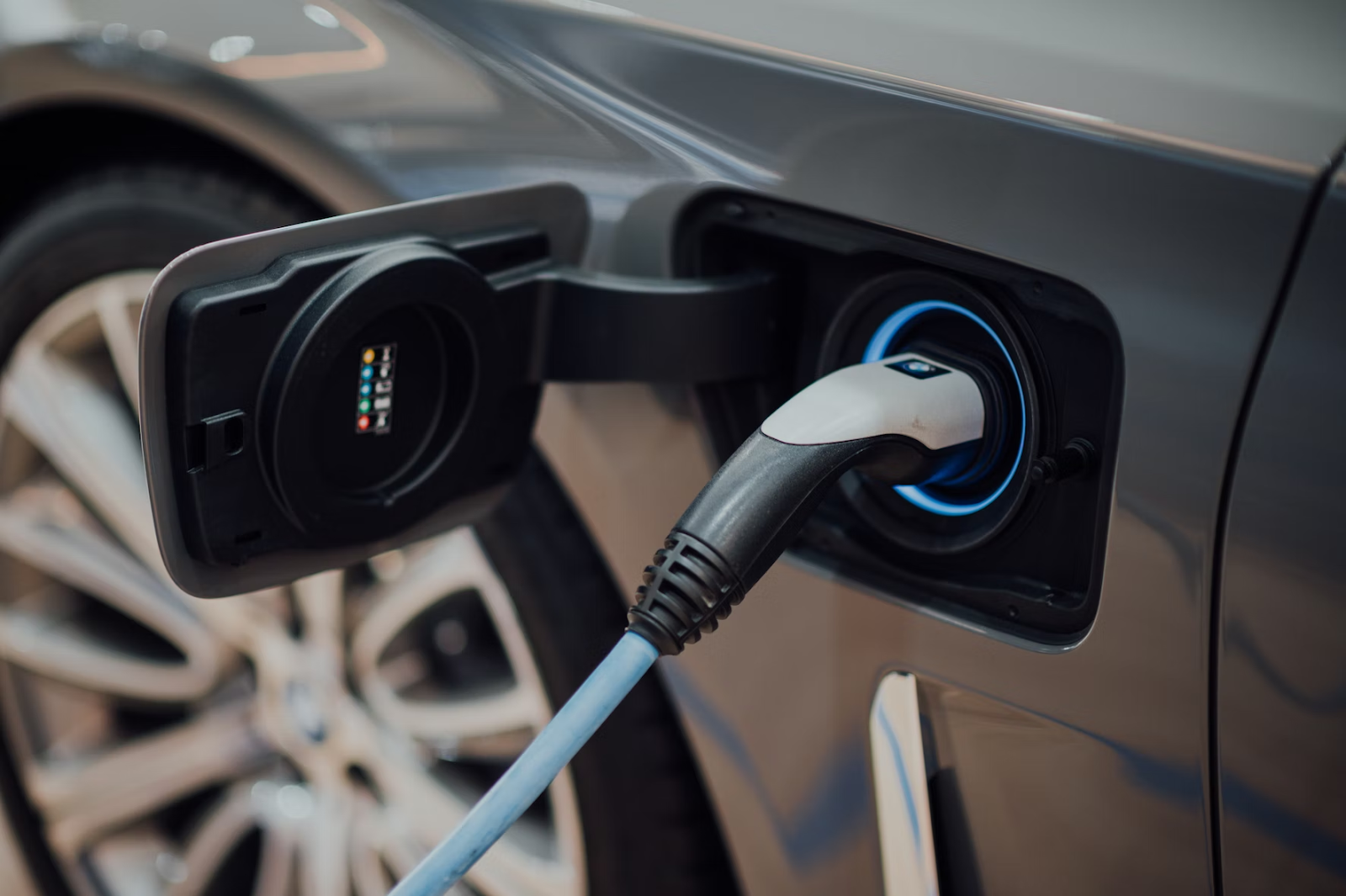
Photo | Unsplash
Electric Transportation
Transitioning to trains, trams, cars, buses, and bikes that run on renewable electricity is a key strategy in achieving total decarbonization of the transportation sector. Electric motors are much more efficient than engines that combust fuels, but they rely either on a direct connection to an electrical grid or battery storage. As an energy delivery system for transport, electrification is best suited for shorter distances or highly trafficked routes where electric rail infrastructure or rapid-charging EV stations are economically feasible. Currently, batteries have a lower energy density than fossil fuels, but battery technologies have dramatically advanced. In 2010 a typical auto battery could travel 70 miles on a single charge, now median ranges are above 250 miles. The One Earth scenario finds that by 2055 electrification will meet 100% of rail and 53% of road transport energy.
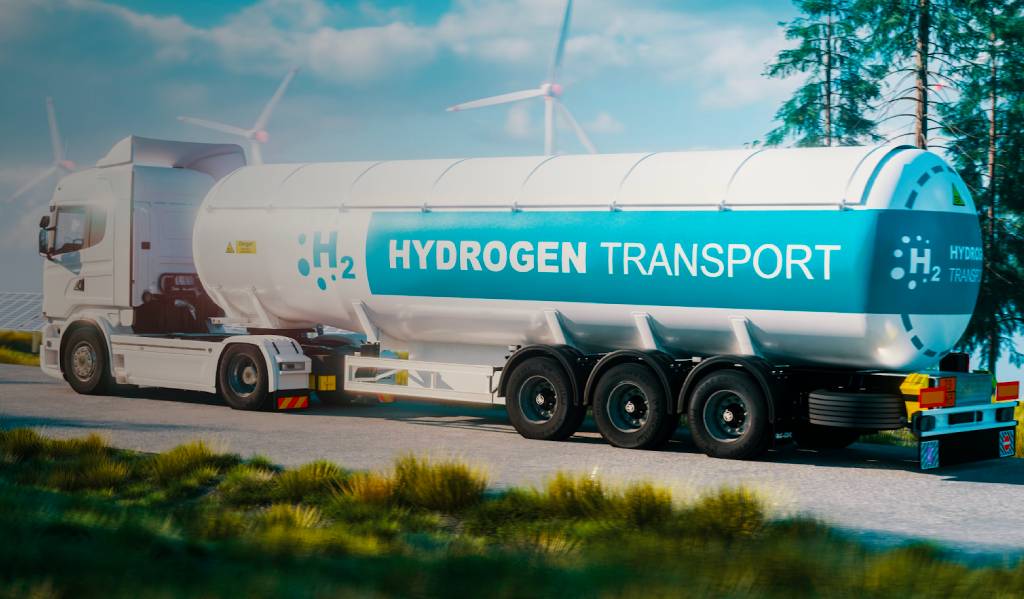
Green Hydrogen
Hydrogen fuel (H2) is generated by using renewable energy to split water through a process called electrolysis, which separates it into Hydrogen and Oxygen. The resulting hydrogen can be stored and used as needed in a fuel cell to produce renewable power. This approach offers a valuable solution for various applications, such as powering navigation systems and fueling large freight trucks. Hydrogen, in comparison to current and expected battery technologies, offers a more compact and efficient means of energy storage. It's important to distinguish between green hydrogen, produced via renewable-powered electrolysis, and blue hydrogen, which is derived from natural gas rather than renewable sources.
One significant advantage of hydrogen is its ability to leverage existing investments in gas pipeline distribution. Additionally, as part of a 'just transition' strategy, it allows workers in the oil and gas industry to transition smoothly into the clean energy economy. According to the One Earth scenario, it is projected that by 2055, green hydrogen will account for 22% of energy used in road transport and 17% in shipping.

Sustainable Biofuel
Through various conversion processes, biomass (e.g., wood, crops, algae, and other agricultural/forest residues) can be converted into energy-dense liquid or gaseous fuels. If biomass is collected in a way that does not reduce the total extent of forests or croplands or threaten biodiversity, it can be a great source of sustainable, portable energy. Ethanol, created by fermenting biomass, is the most widely used biofuel today but can often rely too heavily on food crops such as corn. Sustainable bioethanol will be created from cellulosic biomass materials instead of feedstocks.
Other biofuels include methanol (created via gasification), biodiesel (created from waste vegetable oils), biocrude (created via pyrolysis), and methane (created through anaerobic digestion of biomass). Biofuels will be useful for their energy density—biodiesel can be nearly as energy-dense as gasoline—and portability. Due to their versatility, biofuels are projected to find use across all modes of transportation. The One Earth scenario finds that by 2055, biofuel will account for 34% of all transport energy.
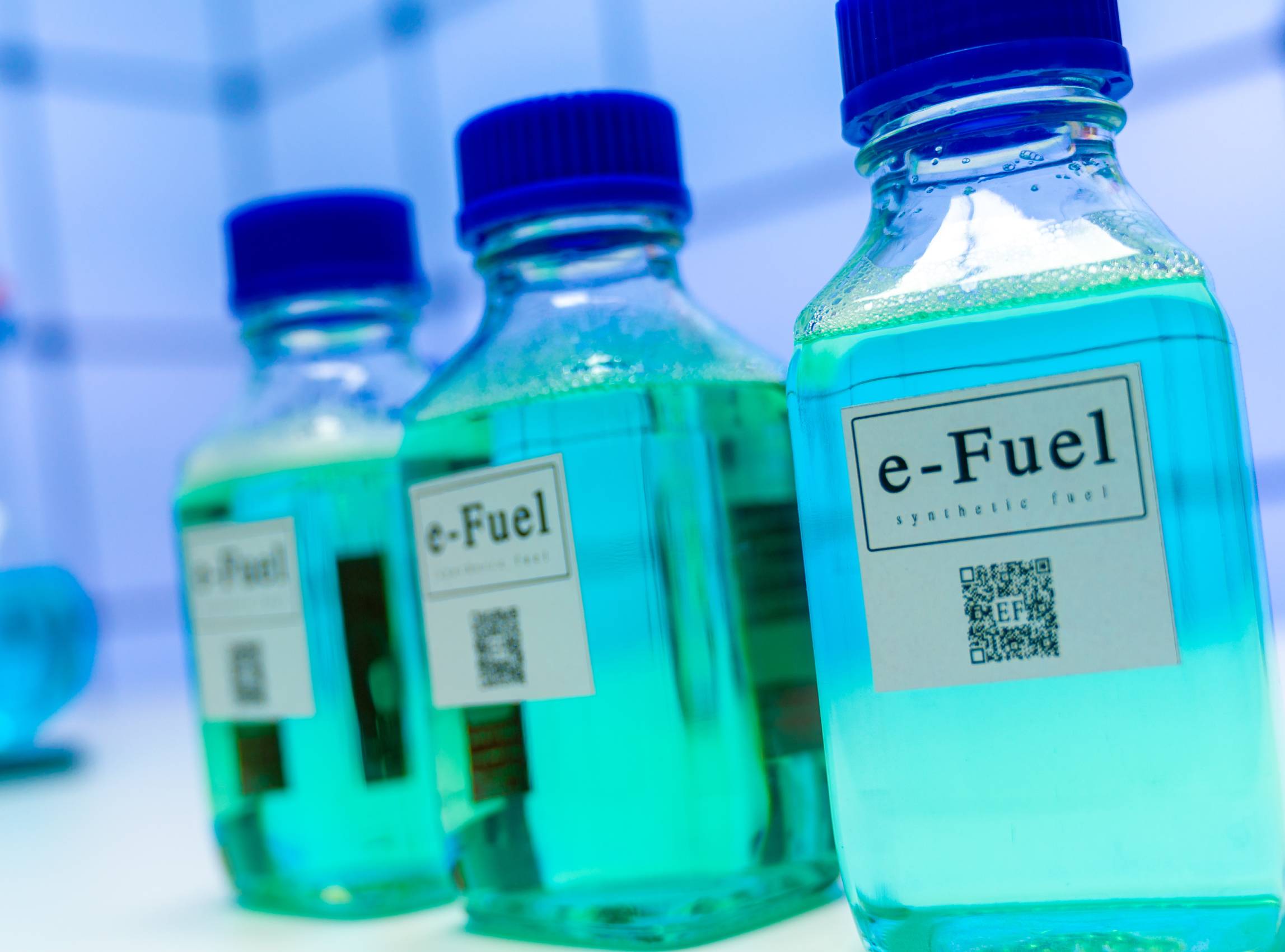
Electrofuels or e-fuels or synthetic fuels are an emerging class of carbon neutral fuels that are made from renewable sources. Photo ID 266560582 © Luchschen | Dreamstime.com
Sustainable Synfuel
Synthetic fuels have the same molecular composition as diesel, gasoline, or jet fuel, but they are not extracted from fossil fuels. Instead, they are synthesized from scratch using green hydrogen and a sustainable carbon source. Green hydrogen is produced by splitting water using renewable electricity, and the carbon dioxide needed comes from various sources, including waste biomass, direct capture from the air, or byproducts of industrial processes like cement production. These two components are then combined to create hydrocarbons that are compatible with our existing vehicles, such as planes and ships, requiring minimal engine modifications. While synthetic fuels, like fossil fuels, release carbon emissions when burned, they can be considered net-zero if the carbon they contain is sourced directly from the atmosphere or from regenerative biomass sources.
Additionally, their emissions could be captured to funnel into more fuel production. Besides allowing existing vehicles to continue operating, their primary advantage is their energy density: synfuels are 100 times denser than today’s batteries and ten times higher than pressurized hydrogen gas. Nevertheless, because they rely on large amounts of renewable energy to create, their use will be limited to hard-to-electrify modes of transit, particularly aviation and navigation. The One Earth scenario finds that by 2055, synfuel will account for 33% of navigation and aviation.
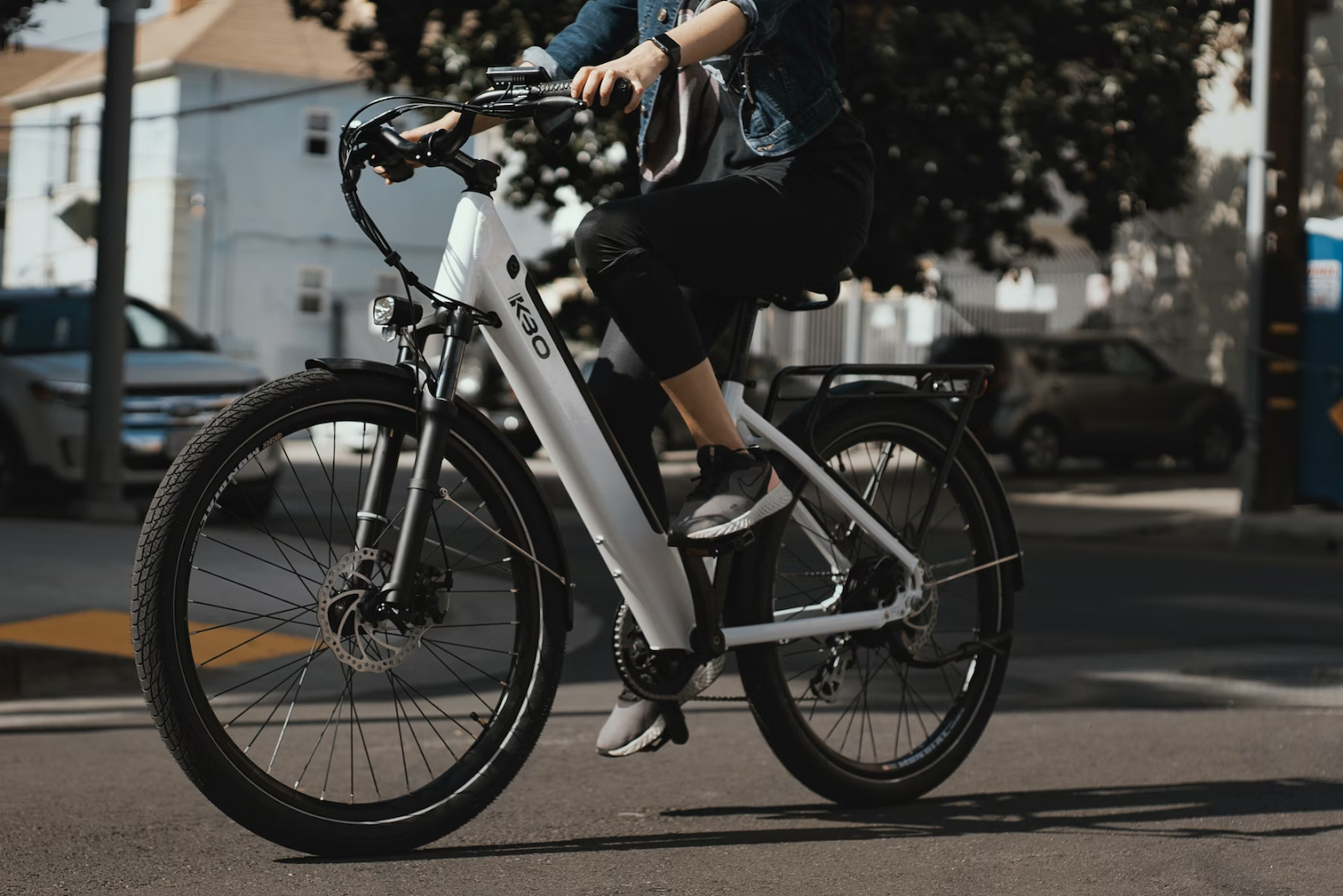
Photo | Unsplash
Transportation Efficiency
Switching fuels alone is not the sole solution for transforming the transportation sector. A significant portion of our energy consumption in transportation can be avoided by making better, more efficient choices. This is apparent in car-dependent North America, which is responsible for 34% of the world's transportation energy consumption but only constitutes about 7% of the global population. This highlights the substantial impact of behavior and infrastructure on energy demand in transportation. Consequently, the IPCC emphasizes the need for "systemic infrastructure changes that enable behavioral modifications and reductions in demand for transport services that can, in turn, reduce energy demand.
This comprehensive approach involves a combination of behavioral, infrastructural, and technological changes aimed at moving more people with less energy. It encompasses investments in public transportation like railways, buses, bicycles, and pedestrian-friendly infrastructure, as well as the promotion of plug-in electric vehicles (PEVs) to reduce reliance on energy-inefficient modes of travel such as cars and airplanes. Additionally, policies like remote work can reduce commuting, and initiatives focused on vehicle weight reduction can further decrease the energy required for transportation.
The decarbonization of the transportation sector is marked by three large trends: avoiding the need for energy-intensive transportation where possible, shifting to more efficient transportation modalities, and developing and expanding zero-emissions cars, trains, boats, and planes.
Avoiding transport energy demand includes behavioral changes, better urban planning, increasing the local production of goods, and innovating transport logistics. Sometimes the most efficient transportation is avoided transportation. Increasing the walkability and bikeability of cities, allowing remote work, streamlining freight logistics, and moving production closer to areas of demand are all ways to facilitate the transportation transition.
Shifting to more energy-efficient transport modes largely means moving from road to rail for both passenger and freight transit, as well as shifting aviation to navigation. To stay within 1.5˚C of warming, the below transportation demands were projected for rail, road, aviation, and navigation. Passenger and freight road transportation is projected to stay largely unchanged while the global population increases, meaning per capita road transportation should decrease. Due to its high energy needs, aviation is projected to decline to almost 50% of its 2020 demand for both passenger and freight. Navigation will also decrease from the 2020 baseline, but less so as it is more efficient than air travel.
Achieving these goals will require the domestication of many supply chains to lessen the need for overseas and long-distance shipping. The major outlier being that rail transit is expected to increase over 3-fold in the coming decades as it’s the easiest to electrify and the most efficient at scale.
Lastly, inefficient combustion engines need to be replaced with electric drives or engines that can run on renewable fuels. Rail is expected to become fully electric by 2050, with only a minor dependence on biofuels as a bridge solution. Road transit will rely on a mixture of electricity, hydrogen, and biofuels, with passenger road transport consisting of more than 70% electric cars but long-haul freight relying more on hydrogen and biofuels. Navigation and aviation are not expected to be electrified before 2050 and will instead rely on renewable liquid and gas energy carriers: hydrogen, synfuels, and biofuels. So far, the decarbonization of transport is being led by Electric Vehicles. California banned the sale of fossil fuel-based cars after 2035, a move expected to accelerate the transition to EVs nationally, if not globally. But the real leaders in EV sales have been China and Europe, with new car sales in Norway already nearing 90% electric.
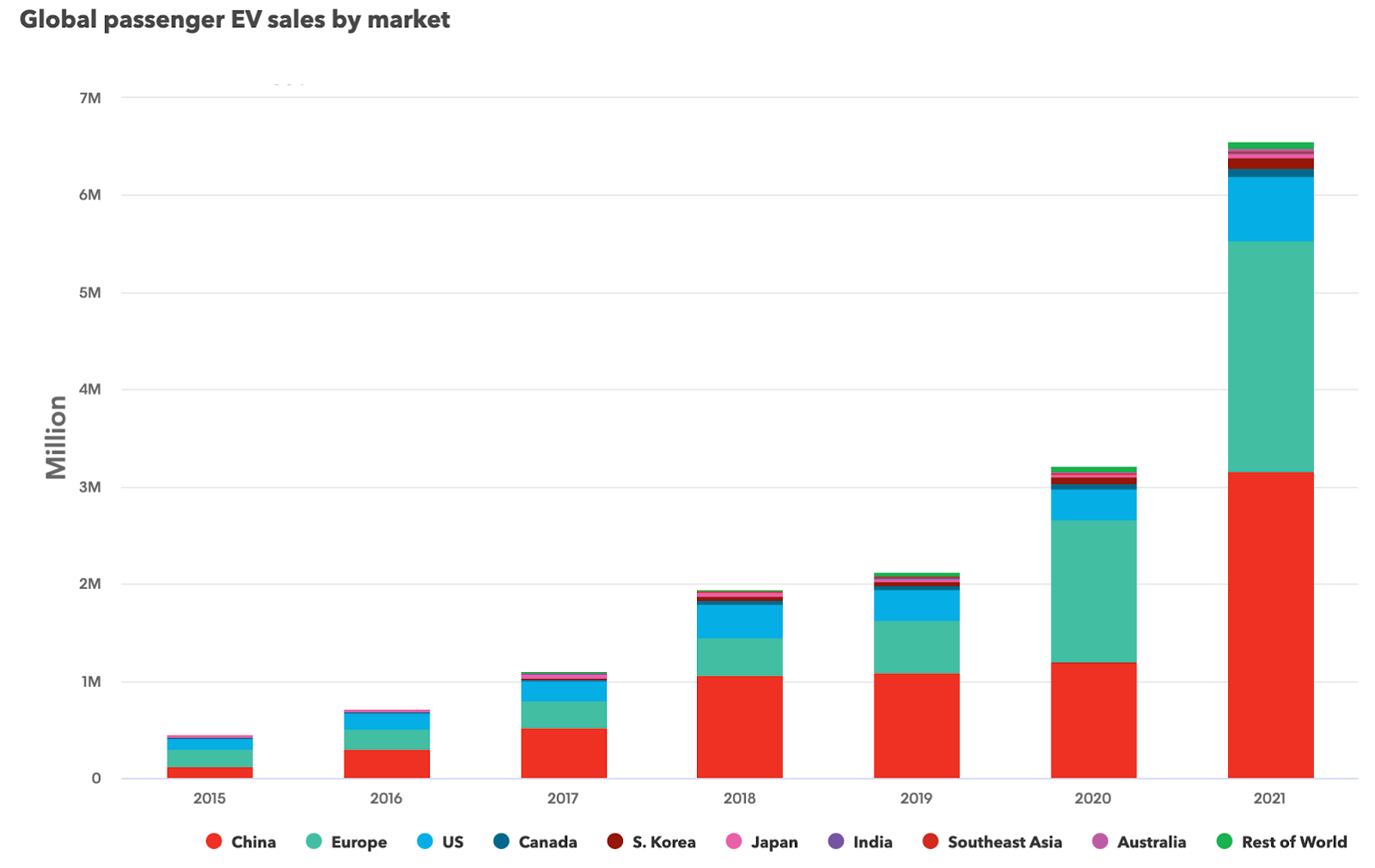
EV sales are accelerating every year, with China, Europe, and the US leading the transition. Source
Transportation is one of the most empowering technologies of modern civilization. However, up until now, it has relied almost exclusively on fossil fuels. Decarbonizing the transport industry while the world population grows, globalization continues, and developing countries modernize their infrastructure will be a massive endeavor. It will require behavioral changes, lifestyle changes, and a broad suite of innovations, but transitioning to renewables also promises many positive externalities: less air pollution, more enjoyable cities, less time wasted in cars, and healthier people and ecosystems.
-
-
Achieving the Paris Climate Agreement Goals, Part 2: https://link.springer.com/book/10.1007/978-3-030-99177-7
https://www.carbonbrief.org/in-depth-qa-the-ipccs-sixth-assessment-on-how-to-tackle-climate-change/
https://www.epa.gov/ghgemissions/sources-greenhouse-gas-emissions
Biofuel: https://www.nrel.gov/docs/fy00osti/25876.pdf
Synfuels: energy density, https://royalsociety.org/-/media/policy/projects/synthetic-fuels/synthetic-fuels-briefing.pdf, https://www.greencarcongress.com/2017/11/audi-steps-up-research-into-carbon-neutral-synthetic-fuels-with-new-e-diesel-pilot-plant-power-to-li.html
-
.jpg?auto=compress%2Cformat)
